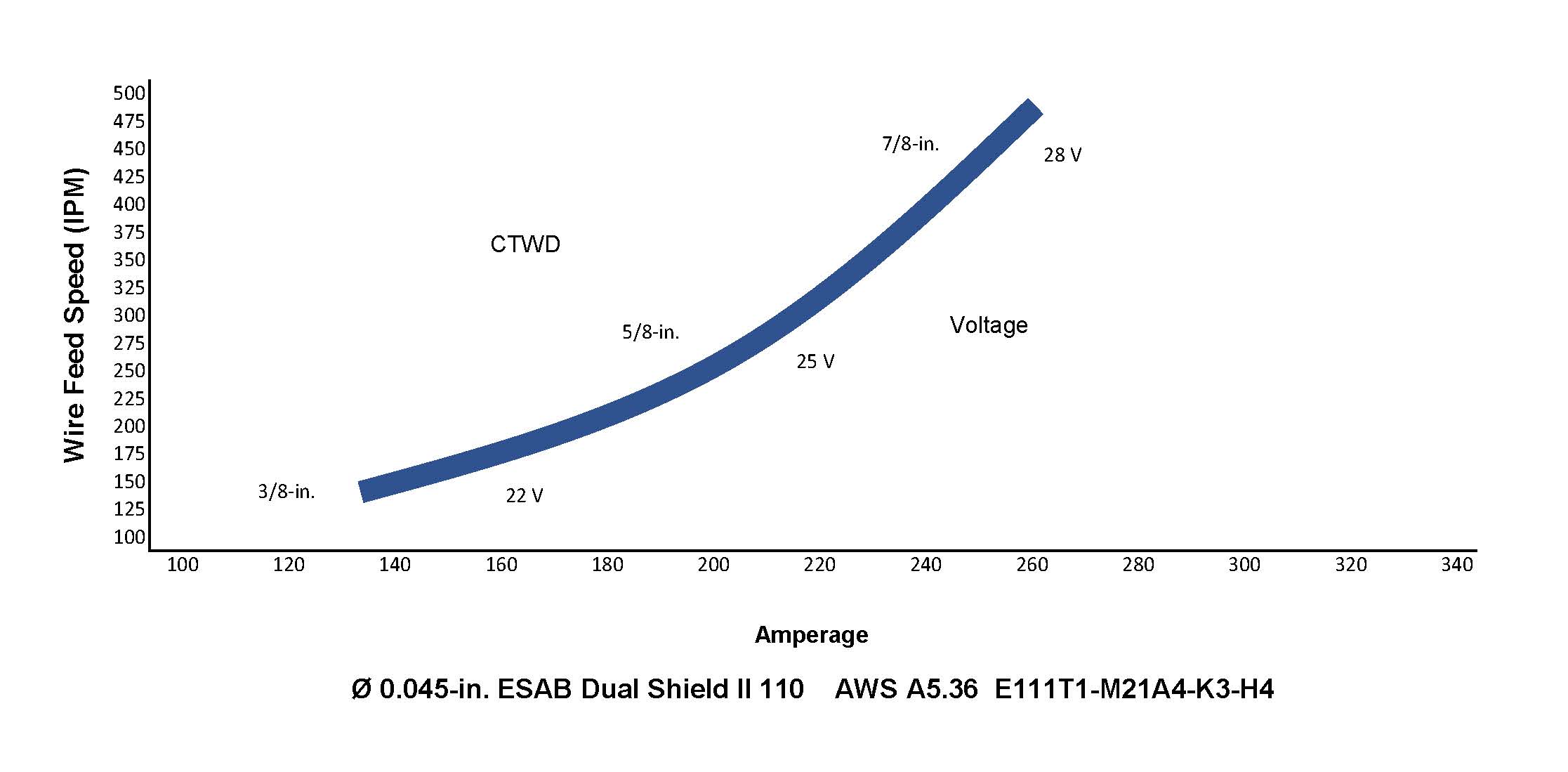All,
We are currently in the process of qualifying a procedure for welding 514 Grade B to 514 Grade H using the FCAW process. This procedure needs to have successful CVN testing per AWS D1.1:2015 (table 4.14) we failed the CVN test with low impact values in the weld metal (10,9,10) HAZ in both material was 50-90 range) my question is what would result in low impact in the weld metal?
Here are the testing parameters…
Process: FCAW
Position: 3G (up)
Gas: 75/25 AR/C02
Flow Rate: 50psi
Wire: ESAB e111T (.045”)
Voltage: 25.5
Amps: 200-220
Wire speed: 310-330
IPM: 10.57-13.84
Heat Input: 33.33 Kj/in
Joint: Double Vee (root angle= 45deg. opening= 1/16” Face= 1/8”)
Preheat: 100F / Max. 400F

 By 803056
By 803056  Date
Date 05-28-2018 15:55
Edited 05-28-2018 17:43
Happy Memorial Day!!!!
I checked your heat input calculation using the average values for the welding parameters. I calculated about 25-26 kJ/inch. That seems to be on the low side and would tend to result in fusion type defects.
I wouldn't expect to see a significant detrimental affect on the notch toughness until you got up around 50 to 55 kJ/inch. You didn't mention the thickness of the plate used for qualification. For plate thickness on the order of 1-inch or thicker, the heat input can increase up to about 60 kJ/inch.
Excessive preheat or interpass temperature can be counter productive, but sufficient preheat is need to mitigate the potential for cracking. Use the methodology for determining the minimum preheat found in the Annex of D1.1. Assume you are meeting the H2 level of hydrogen control and assume the joint is "high restraint" just because of the length and thickness you are welding. If you are using a fixture, do not over tighten the clamps. Allow the maximum degree of movement during cooling while still controlling the angular distortion. You might considered flipping the plate back and forth a few times while welding to balance the residual stresses and maintaining the "flatness" of the plates.
You didn't mention a back gouge operation before welding the second side. Make sure the back gouge operation extends deep enough to obtain sound metal. A magnetic particle test of the back gouge is a good idea. Don't let the assembly cool down without supplementing the preheat before resuming welding.
Considering the low heat input described, I am surprised there was no mention of fusion type defects and slag inclusions. Upping the heat input will mitigate the potential for those typical type of defects which should also provide better test results results. However, don't let the interpass temperature climb while welding. 500 degrees F is a typical maximum interpass temperature, i.e., it seems to be an industry standard based on experience, when notch toughness is an issue.
Before performing the destructive tests, subject the plate to UT and use the acceptance criteria for cyclic loading. If the UT detects any defects, step back and weld another assembly.
The attached file is a way to provide the welder with the welding parameters that is easy to use. I've had very good success with this method of presenting the data. It is easy to use and it works. By the way, CTWD is contact tip to work distance. It is not standard terminology, but I find the welders have an easier time monitoring it when compared to electrode extension. With electrode extension they have to add the arc length. It is just more confusion when I'm trying to simplify. CTWD seems to work better.
Good luck - Al


